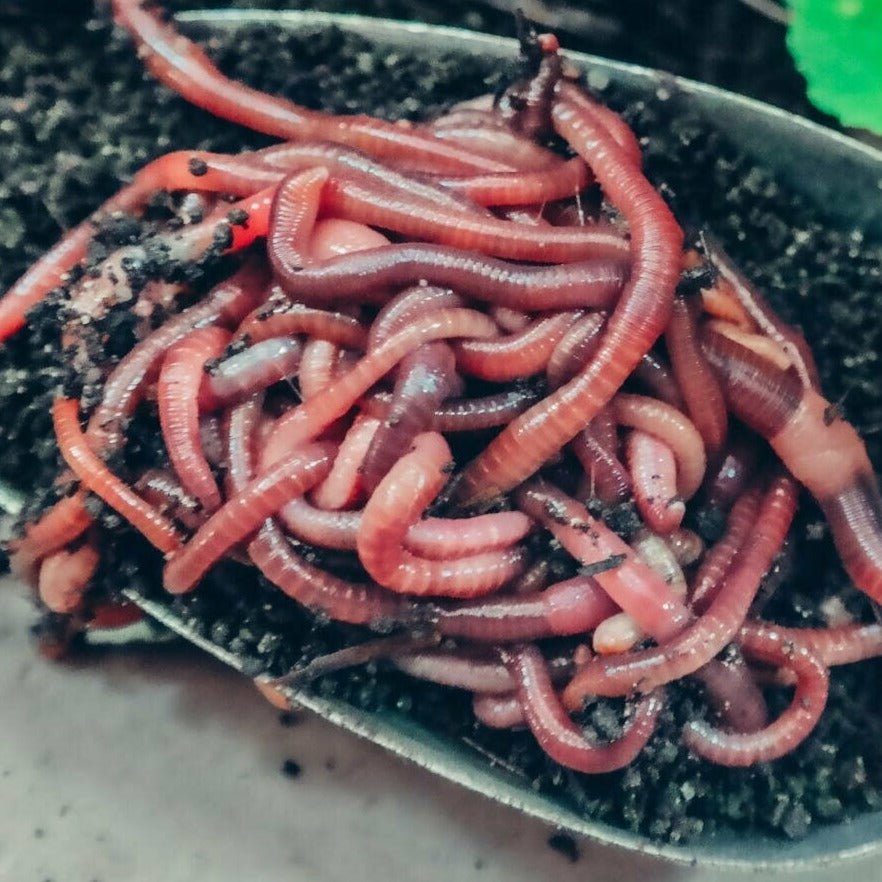Achieve a Greener Lawn with the Help of Red Wiggler Express Lawn Care Treatments
Red Wigglers: The Unsung Heroes of Organic Waste Recycling
Red wigglers, or Eisenia fetida, offer as essential representatives in the organic waste recycling process, transforming disposed of products into valuable vermicompost. As the world progressively seeks services to fight waste buildup and boost farming performance, comprehending the function of these worms becomes necessary.
What Are Red Wigglers?
The exceptional strength of red wigglers, clinically referred to as Eisenia fetida, highlights their essential duty in natural waste recycling. These small, reddish-brown earthworms are typically discovered in breaking down raw material, such as compost heap and manure heaps. Lake Hickory Bait. Unlike other earthworm varieties, red wigglers prosper in nutrient-rich atmospheres and are very efficient at breaking down organic products, making them vital for vermicomposting

(Red Wiggler Express)Along with their duty in waste reduction, red wigglers add to soil health and wellness by enhancing soil structure and oygenation via their delving tasks (Lake Hickory Bait). Their visibility in composting systems not just boosts decay rates however additionally promotes a lasting approach to throw away monitoring, showing their importance in eco-friendly preservation initiatives
Benefits of Composting With Worms
Composting with worms, particularly red wigglers, uses various advantages that improve both waste management and dirt wellness. These worms effectively damage down organic waste, converting it right into nutrient-rich vermicompost that improves dirt. This procedure speeds up decomposition, enabling a faster recycling of kitchen scraps and other organic materials contrasted to standard composting techniques.
In addition, the vermicompost generated by red wigglers is including useful bacteria, which help boost dirt framework, oygenation, and wetness retention. This improves the total health and wellness of plants, advertising strenuous growth and boosted returns in yards and agricultural settings. Moreover, making use of worms in composting minimizes the production of greenhouse gases, such as methane, adding to a more sustainable waste administration system.

How to Beginning Vermicomposting
Establishing a vermicomposting system is a straightforward process that can produce considerable advantages for both waste management and soil enrichment. To start, select an ideal container, such as a plastic bin or wood box, with ample ventilation holes to guarantee correct air flow. The measurements need to ideally be around 2 feet by 3 feet, enabling enough area for the worms to flourish.
Next, prepare bed linen product, which can be composed of shredded newspaper, cardboard, or coconut coir. This bedding ought to be dampened to develop an ideal environment for the worms. As soon as the bedding remains in place, introduce red wigglers (Eisenia fetida) right into the container, usually around one pound of worms for every single square foot of area.
Complying with the placement of worms, include organic waste, such as vegetables and fruit scraps, coffee grounds, and crushed eggshells. Avoid adding dairy products, meat, or oils, as these can develop smells and bring in pests. Finally, place the container in a shaded, temperature-controlled location to preserve optimal problems for worm activity. With these steps, you will effectively initiate a vermicomposting system that adds to lasting waste management and enriches your soil.
Preserving a Healthy Worm Container
(Lake Hickory Bait)Maintaining a worm bin growing needs normal attention and like make certain the health of the red wigglers and the effectiveness of the composting procedure. Proper upkeep starts with monitoring the wetness degrees; the container ought to perspire however not soaked. A good rule of thumb is to keep a consistency comparable to a wrung-out sponge.
Carefully mixing the bedding and food scraps every few weeks protects against compaction and guarantees that all worms have access to oxygen. Additionally, it is vital to feed the worms suitably.
If the bin comes to be too hot or cool, the worms might become stressed out. By diligently handling these variables, one can preserve a robust and productive worm container.
Influence on Sustainable Living
The successful maintenance of a worm bin not only profits the wellness of red wigglers yet likewise adds considerably to lasting living practices. By reusing organic waste, such as cooking area scraps and backyard particles, red wigglers assist divert substantial quantities of material from landfills. This reduction in waste not just lowers greenhouse gas emissions but additionally decreases the ecological problem connected with waste administration.
In addition, the spreadings produced by red wigglers act as a nutrient-rich natural plant food, improving soil health and advertising plant development. This natural choice to chemical fertilizers sustains sustainable This Site agriculture and horticulture methods, lowering dependence on artificial inputs that can harm communities. Additionally, worm composting promotes understanding of waste management, urging people and neighborhoods to take on more lasting practices.

Final Thought
In summary, red wigglers serve as important contributors to organic waste recycling via their effective decomposition of natural materials. By incorporating vermicomposting right into waste administration approaches, individuals and communities can dramatically reduce waste while promoting environmental sustainability.